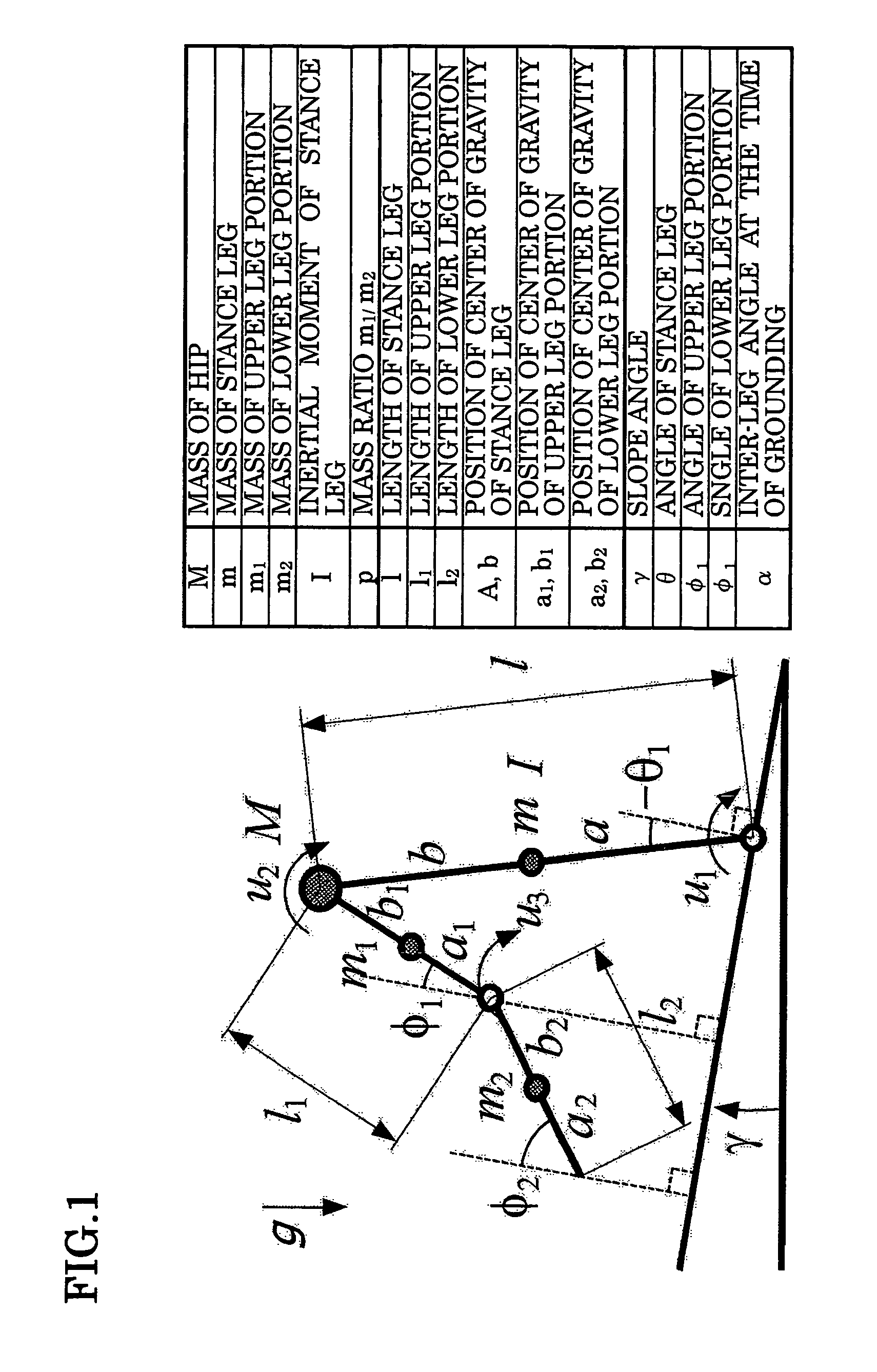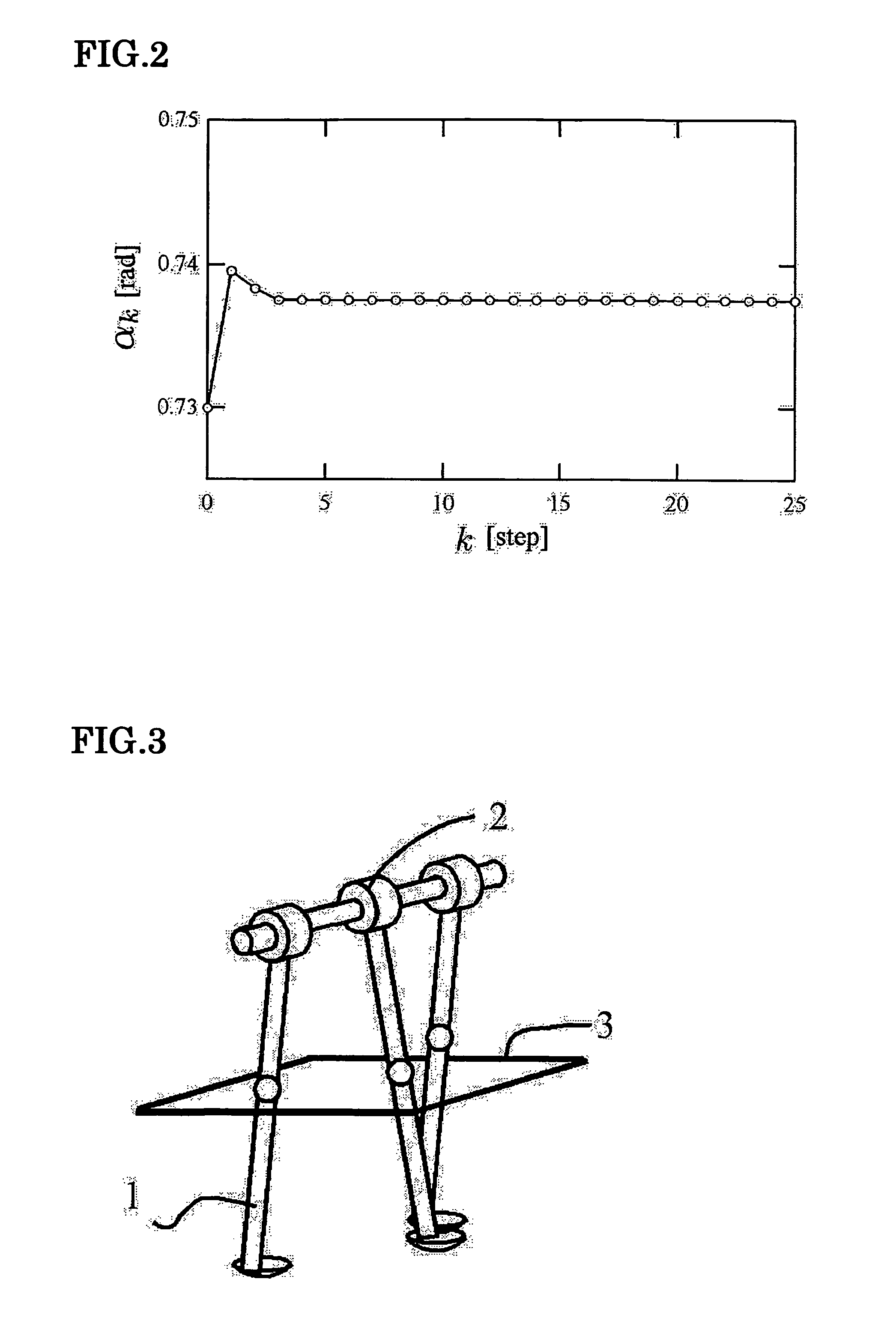Passive walking legged robot
a legged robot and passive technology, applied in the direction of programme control, distance measurement, electric programme control, etc., can solve the problems of unnatural gait, difficult in principle to realize a highly energy-efficient gait, and inability to achieve steady gait, etc., to achieve stable continuous walking, high energy-efficient gait, and stable global stabilization of fixed points
- Summary
- Abstract
- Description
- Claims
- Application Information
AI Technical Summary
Benefits of technology
Problems solved by technology
Method used
Image
Examples
embodiment
First Embodiment
[0026]FIG. 1 schematically shows a legged mobile body having a knee joint. First, fixed point generation and local stabilization on level ground (γ=0 [rad]) will be described. In FIG. 1, l=0.7 [m], l1=l2=0.35 [m], a1=b1=a2=b2=0.35 [m], and p=m2 / m1=0.4. The fixed point of the passive dynamic walking class corresponding to a slope angle of γ=0.073 [rad] is derived from a legged mobile body energy balance formula, a leg switching formula, and a leg swinging motion formula. The quantity of state at this time corresponds to an inter-leg angle αf=0.73750 [rad] immediately after grounding and the angular velocity of a stance leg (dθ / dt)|f+=1.35140 [rad / s]. Note that in this embodiment, the knee joint of a swing leg is fixed at the point where the swing leg becomes straight and the knee joint of the stance leg extends straight, and therefore the inter-leg angle immediately after grounding is considered equivalent to the grounding position of the leg.
[0027]Joint torque vector...
PUM
 Login to View More
Login to View More Abstract
Description
Claims
Application Information
 Login to View More
Login to View More - R&D
- Intellectual Property
- Life Sciences
- Materials
- Tech Scout
- Unparalleled Data Quality
- Higher Quality Content
- 60% Fewer Hallucinations
Browse by: Latest US Patents, China's latest patents, Technical Efficacy Thesaurus, Application Domain, Technology Topic, Popular Technical Reports.
© 2025 PatSnap. All rights reserved.Legal|Privacy policy|Modern Slavery Act Transparency Statement|Sitemap|About US| Contact US: help@patsnap.com



